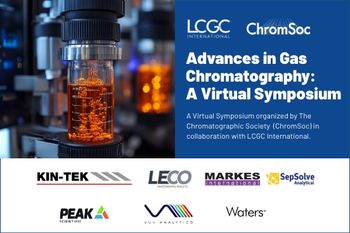
Dispersive Solid Phase Microextraction for Detecting PAHs in Juice and Water
Dokuz Eylul University scientists tested dispersive micro solid-phase extraction (D-µSPE)’s effectiveness for detecting polycyclic aromatic hydrocarbons (PAHs) in fruit juice and environmental water samples.
Scientists from Dokuz Eylul University in Izmir, Turkey, tested the effectiveness of dispersive micro solid-phase extraction (D-µSPE) for detecting polycyclic aromatic hydrocarbons (PAHs) in fruit juice and environmental water samples. Their findings were published in the Journal of Chromatography A (1).
Polycyclic aromatic hydrocarbons (PAHs) are a notable group of carcinogenic molecules. Consisting of hydrogen and carbon atoms arranged in two or more fused aromatic (benzene) rings, PAHs may form in foods by thermal processing or be derived from environmental sources, such as contaminated water or soil. In the environment, PAHs can be formed through incomplete combustion of organic carbonaceous materials or through emission processes from natural or anthropogenic sources. This can prove dangerous, as exposure to some PAHs can cause nausea, diarrhea, cataracts, and even cancer, among other diseases (2,3).
Read More:
With these potentially dangerous effects, PAH compounds’ distributions in samples like food products or environmental waters need to be seriously monitored. However, due to low PAH concentrations in environmental matrices and foods, direct determination of these analytes is not always possible without complex sample pretreatment. Various extraction methods have been used for this purpose, with D-µSPE being one example of such methods. In D-µSPE, either ultrasonication or an emulsifier can be used to increase interactions between analytes and the sorbent, thus increasing extraction efficiency.
Read More:
In the study, an aluminum-based metal organic framework (MOF) composite containing ionic liquid was prepared and used as a sorbent for extracting 16 PAHs before analysis via gas chromatography–mass spectrometry (GC–MS). The optimized parameter conditions were 5 mL of sample solution, 10 min sonication by ultrasonic bath, 30 mg of sorbent, 30 °C extraction temperature, 0.1 mL of hexane as elution solvent with 5 min elution time.
Since PAH compounds are hydrophobic whilst containing different numbers of aromatic rings, their volatility and molecular weights differ. Further, since interactions like π-π interaction and hydrophobic interaction between PAHs and ionic liquids (IL)/MOF composite are different, the extraction efficiencies obtained are also different.
The D-µSPE method presented that the limit of detection (LOD) and limit of quantification (LOQ) were in the ranges of 0.01–0.10 μg l-1, and 0.04–0.33 μg L-1, respectively. The intra-day and inter-day repeatability values ranged between 1.18–4.88% and 1.02–5.06%, respectively. Further, different concentrations of each PAH compound were added to real samples, namely peach juice, cherry juice, tap water, and rainwater samples. No PAH residues were detected in all samples. PAH recoveries were obtained in the range of 84.9–99.9% for spiked 5, 50, and 100 μg l-1 standard polycyclic aromatic hydrocarbons solution.
With these findings, the developed method has been deemed simple, applicable, environmentally friendly, and reproducible. This will allow efforts for detecting PAHs in the environment and products meant for human consumption to progress, potentially leading to better protections.
References
(1) Pamik, D. T.; Bozkurt, S. S.; Büyükkamaci, N. An Ultrasound Assisted Dispersive Micro Solid-Phase Extraction and a Composite Ionic Liquid-Metal Organic Framework for Sixteen Polycyclic Aromatic Hydrocarbons Analysis in Fruit Juice and Environmental Water Samples. J. Chromatogr. A 2024, 1733, 465259. DOI:
(2) Acevedo, A. MJH Life Sciences 2024.
(3) Polycyclic Aromatic Hydrocarbons (PAHs). Illinois Department of Public Health 2024.
Newsletter
Join the global community of analytical scientists who trust LCGC for insights on the latest techniques, trends, and expert solutions in chromatography.





